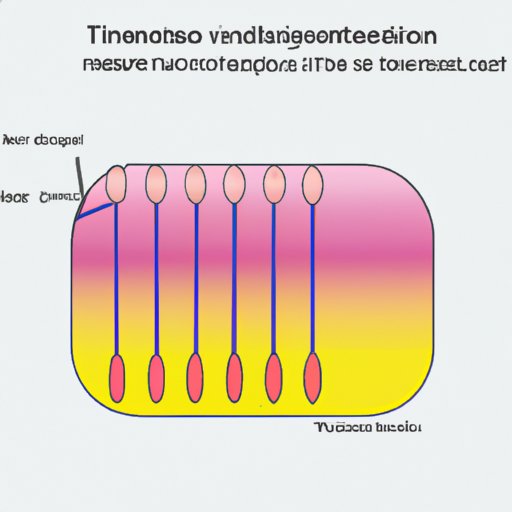I. Introduction
Simple diffusion is a fundamental process that is essential for understanding cellular transport. However, many people find it challenging to comprehend the underlying principles and concept. The purpose of this article is to simplify this complex subject and provide a comprehensive overview of simple diffusion.
II. The Basics of Simple Diffusion: How Molecules Move Across a Cell Membrane
A cell membrane is a thin layer that encloses a living cell and acts as a barrier to control the movement of substances. Simple diffusion is the process by which molecules move from an area of higher concentration to an area of lower concentration through the cell membrane. This movement is driven by the concentration gradient, which is the difference in concentration between two areas.

III. Demystifying Simple Diffusion: A Stepping Stone to Understanding Cellular Transport
Simple diffusion is the foundation for understanding all forms of cellular transport. Facilitated diffusion and active transport are two other methods used by cells to transport molecules across the membrane. Facilitated diffusion involves the use of membrane-bound transport proteins to move molecules across the cell membrane, while active transport requires energy input to move molecules against the concentration gradient.
IV. What is Simple Diffusion and How Does it Work?
Simple diffusion is the movement of molecules across a cell membrane without the use of membrane proteins or energy. It relies on the physical properties of the molecules, such as size and polarity. Small, hydrophobic, and non-polar molecules, such as oxygen and carbon dioxide, can diffuse easily across the cell membrane. In contrast, larger, polar molecules, such as glucose and amino acids, require the use of transport proteins to move across the membrane.
V. Understanding the Science Behind Simple Diffusion
The physical and chemical principles of simple diffusion are based on the movement of particles from an area of higher concentration to an area of lower concentration, which is governed by the laws of thermodynamics. Several factors affect the rate of diffusion, including temperature, distance, and concentration gradient. Simple diffusion is not limited to cellular transport; it is also applicable to other scientific fields, such as atmospheric science and chemistry.
VI. The Role of Simple Diffusion in Maintaining Homeostasis
Homeostasis is the maintenance of a stable internal environment in living organisms. Simple diffusion plays a crucial role in maintaining homeostasis by allowing for the exchange of gases, such as oxygen and carbon dioxide, across the cell membrane. Other examples of simple diffusion in homeostasis include the movement of nutrients and waste products.
VII. Exploring the Significance of Simple Diffusion in Life Processes
Simple diffusion is essential to various life processes in plants and animals. For example, simple diffusion is critical in photosynthesis, where carbon dioxide enters the plant, and oxygen exits. In animals, simple diffusion occurs in the exchange of gases in the lungs and is involved in the regulation of ions in nerve and muscle cells. Simple diffusion has also played an important role in scientific discoveries, such as the identification of the molecular structure of DNA.
VIII. Simple Diffusion: An Essential Process for Cellular Survival and Functioning
Simple diffusion is a critical process for the survival and functioning of cells. Many molecules use this process to enter or exit the cell, including gases, nutrients, and waste products. Without simple diffusion, cells would not be able to regulate their internal environment, and normal cellular functions would be disrupted.
IX. Conclusion
Simple diffusion is a basic process that is fundamental to understanding cellular transport and homeostasis. Understanding the physical and chemical principles of simple diffusion is crucial for understanding other forms of transport, including facilitated diffusion and active transport. By comprehending simple diffusion, we can gain insight into the importance of transport in living organisms. For those struggling to understand this concept, try visualizing the movement of molecules and remember the concentration gradient is the driving force behind the process.
Advice for those who encounter difficulties with cellular transport understanding
Cellular transport is a complex subject that requires an understanding of various processes and principles. If you are having trouble understanding this concept, try breaking it down into smaller parts and visualize the process. Many resources are available online, such as videos and interactive tutorials, that can help make cellular transport more accessible.
